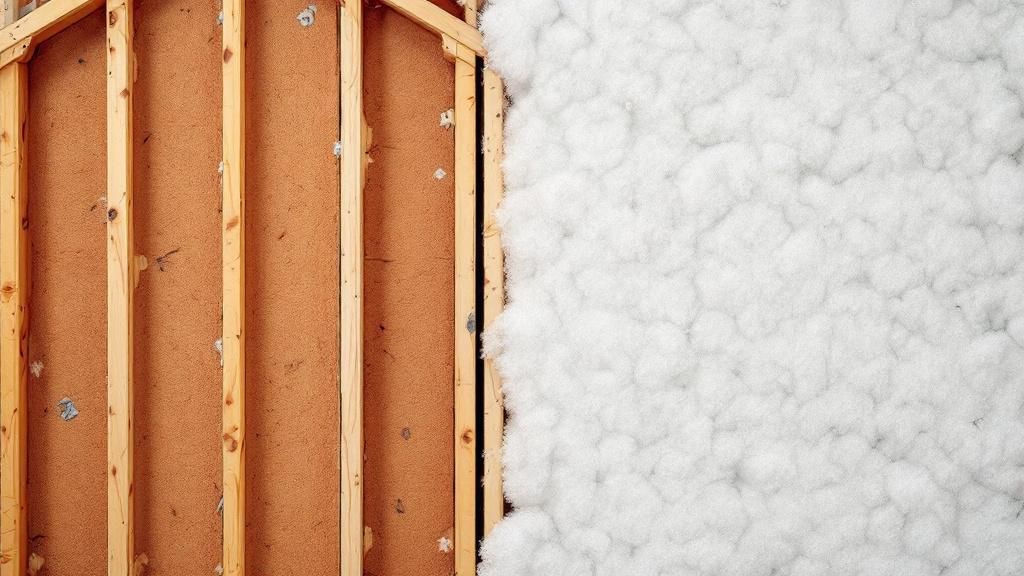Key Takeaways
- Pest-resistant insulation helps deter pests from nesting or entering your home.
- Regular inspections and sealing gaps are crucial to long-term insulation effectiveness.
- Spray foam and polyurethane foam offer durable, low-maintenance protection.
- Smart monitoring tools can help identify insulation issues early.
- Professional installation and maintenance deliver better, more lasting results.
Pest-resistant insulation plays a vital role in keeping Oregon homes and buildings protected—not just from weather fluctuations but from unwanted pests. Designed to make nesting difficult for rodents and insects, this type of insulation is often the first line of defense in pest prevention. But just like any building material, its performance depends on proper upkeep.
Whether you’re renovating an older home or safeguarding a new property, understanding how to care for your insulation will help you get the most out of your investment. Here’s what you need to know to keep pest-resistant insulation working as intended.
Why Maintenance Matters for Pest-Resistant Insulation
While pest-resistant insulation is built to withstand intrusion, it’s not a “set it and forget it” solution. Over time, even the most robust materials can break down due to moisture, temperature changes, or small gaps created during home settling. These weak points create opportunities for pests to find their way in.
Routine inspections, especially before and after the colder months, ensure that the insulation remains intact and continues to serve as a barrier. A small compromise—like a mouse-sized gap in the attic—can quickly become a larger infestation.
Signs Your Insulation May Be Failing
Watch for these early warning signs that your insulation might need attention:
- Drafts or fluctuating indoor temperatures
- Rising energy bills despite regular HVAC use
- Droppings or nesting material in attic or crawl spaces
- Moisture buildup or mildew smell
These could indicate pests have begun to compromise the insulation or that the materials are no longer sealing gaps effectively.
Practical Tips for Long-Term Care
Maintaining pest-resistant insulation doesn’t have to be overwhelming. Here are some practical steps:
- Inspect biannually: Check your attic, basement, and walls at least twice a year.
- Seal entry points: Caulk or use spray foam to close cracks larger than 1/4 inch around foundations and utility entryways.
- Keep areas dry: Moisture can degrade insulation and attract pests. Install proper ventilation and address leaks promptly.
- Replace damaged sections: Don’t patch over compromised areas. Replace the insulation for consistent protection.
- Monitor energy usage: A sudden spike in your heating or cooling bills may indicate a gap in your insulation.
Choosing the Right Insulation for Pest Prevention
Not all insulation materials offer the same level of pest resistance. Here’s a quick overview:
- Spray Foam Insulation: Excellent at sealing small cracks and gaps. Difficult for pests to chew through.
- Cellulose Insulation: Can be treated with pest-repelling additives, but more vulnerable to moisture.
- Fiberglass Insulation: Often easier for rodents to tunnel into if not properly sealed.
- Aircrete and Cement-Bonded Wood Fiber: Durable and pest-resistant, ideal for eco-conscious homes.
Choosing higher-quality materials may involve a greater upfront investment, but the long-term benefits—both in energy savings and pest prevention—often outweigh the cost.
The Value of Professional Assessment
Even if your insulation appears fine on the surface, a professional can spot underlying issues before they escalate. Experienced contractors can:
- Identify hidden vulnerabilities
- Recommend appropriate sealing materials
- Access tight or difficult-to-reach spaces
Services like those offered by local companies such as Pest Patrol help ensure a thorough inspection and maintenance plan tailored to Oregon’s unique pest and climate challenges.
Cost vs. Longevity: Is It Worth It?
It may be tempting to opt for less expensive insulation or skip annual checks—but this can cost more in the long run. Pests cause millions in structural damage every year, often due to overlooked maintenance or poor material choices.
Investing in durable, pest-resistant insulation and following a regular maintenance schedule reduces this risk significantly. Plus, it improves your home’s overall energy efficiency.
Shifting Perspectives on Home Insulation
Today’s homeowners are more educated and proactive when it comes to building health. Pest-resistant insulation is no longer just a niche option—it’s becoming a must-have.
While DIY fixes can help, partnering with professionals ensures the job is done right the first time. Experts can also help select the best product for your home’s specific layout and exposure risks.
Many Oregon property owners are discovering the value of combining insulation upgrades with seasonal pest control programs—an approach already offered by forward-thinking providers like Pest Patrol.
Frequently Asked Questions
What makes insulation “pest-resistant”?
It’s typically made from dense materials like spray foam or treated cellulose that block common entry points and discourage nesting.
How often should insulation be inspected?
At least twice a year, especially before winter and summer seasons.
Can damaged insulation be repaired, or must it be replaced?
Small sections may be replaced, but full replacement is best when dealing with significant pest or moisture damage.
Is pest-resistant insulation more expensive?
It may cost more initially but can reduce long-term repair and energy costs.
Can insulation keep all pests out?
No insulation is foolproof, but combined with sealing, ventilation, and professional monitoring, it offers significant protection.



